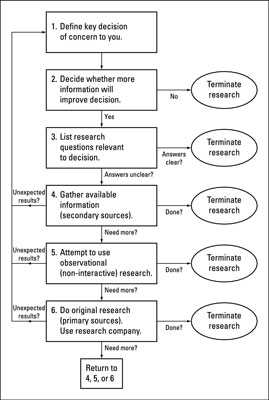Contents:


The measure of a ratio for repaying ability of a firm is the fixed charge coverage ratio. There is a limitation of the interest coverage ratio that is not explicitly considered the firm’s ability to repay its debts. Gross debt service can be used in other personal loan calculations, but it is also most commonly used in mortgage lending. From the result, it can also help to increase their Debt-service coverage ratio before applying, and by doing so, it can get a better position to get approval on various loans. The number that is higher above “1” is more likely banks who approve loans and better payment terms and lower interest rates that can repay. In some cases, Lenders might require that the borrower maintain a certain minimum Debt-service coverage ratio while the loan is also outstanding.

The ratio states net operating income as a multiple of debt obligations due within one year, including interest, principal, sinking funds, and lease payments. If the debt service coverage ratio is less than 1, for example, 0.95, this suggests that there is only sufficient net operating income to cover 95% of annual debt payments. No matter the context-corporate finance, public finance, or personal finance-the debt-service coverage ratio shows the ability to pay debt given a certain amount of revenue. Net operating income is expressed as a multiple of all debt payments, including principal, interest, sinking funds, and lease payments, all of which are due within a year, according to the ratio. The debt service coverage ratio, or the debt coverage ratio, is one method lenders will use to determine if a borrower should receive a loan.
Learn Latest Tutorials
It is also expressed as a ratio and is most often computed on an annual basis. Like a United States government agency designed for helping small businesses, the Small Business Association requires a minimum Debt-service coverage ratio of 1.15 allows to grant loans over $350,000. Companies with a score less than a “1” may still be able to get their loans granted by establishing a debt service reserve account. Suppose the calculation of the Debt-service coverage ratio results in a figure of “1” or above.
- Given those values, the DSCR would equal 3.96, which essentially means that the business owner would have enough money to repay their debt nearly four times in a year.
- How to calculate the Debt Service Coverage Ratio is critical to running a business that’s a fine tuned machine.
- ” We also examine how to calculate the DSCR, including an example calculation and a tutorial video for Excel.
- However we understand that formulating the DSCR calculation manually is annoying so we put together a few templates.
- In this, it leaves no room for any or various unexpected additional costs.
So, Assets America handled both the sale and the loan for us and successfully closed our escrow within the time frame stated in the purchase agreement. In this day and age, it’s especially rare and wonderful to work with a person who actually does what he says he will do. We recommend them to anyone needing any type of commercial real estate transaction and we further highly recommend them for any type of commercial financing. They were diligent and forthright on both accounts and brought our deal to a successful closing. The debt service coverage ratio formula depends on whether a loan is for real estate or a business. While the logic behind the DSCR formula is the same for both, there is a difference in how it is calculated.
It’s really that simple.
In any case, in many instances calculating interest on opening balances is acceptable . Please be aware that as of Monday 3rd April 2023 the ability to register as a new CIMA Candidate or re-activate your CIMA account has been suspended and will not be available until Tuesday 3rd May. Avoid these mistakes by regularly reviewing your expenses and keeping close track of them. An error here and there can add up and make your DSCR appear unstable, which may raise doubts from lenders.

In some agreements, if a borrower’s balance falls below that amount, they are said to be in default. An entity, be it an individual, corporation, or government, with a DSCR greater than 1 is considered to have sufficient income to pay its current debt obligations. If the debt-service coverage ratio is too close to 1, for example, 1.1, a slight decrease in cash flow might prohibit a corporation from being able to pay its obligations. Lenders may, in certain cases, demand that the borrower maintain a particular minimum DSCR during the loan’s term. Considering the DSCR is used to determine the company’s ability to pay off its debt it becomes an important metric for creditors and investors. Creditors will be interested in the company’s cash flows and cash position as well as the amount of debt it owes.
Calculating the Debt Service Coverage Ratio (DSCR)
While an owner managed property might provide some savings to the owner, the lender will likely not consider these savings in the DSCR calculation. As shown above, the DSCR is 1.23x in year 1 and then steadily improves over the holding period to 1.28x in year 5. This is a simple calculation, and it quickly provides insight into how loan payments compare to cash flow for a property. However, sometimes this calculation can get more complex, especially when a lender makes adjustments to NOI, which is a common practice. Typically, a lender will require a debt service coverage ratio higher than 1.0x to provide a cushion in case something goes wrong. The ratio applies if the business has credit lines or loans to its debt.
If a small business owner’s debt service coverage ratio falls below 1 that means their cash flow is already in the negative. Lenders are cautious when considering loan applications with a negative debt service coverage ratio, but it won’t necessarily be a deal-breaker if the business shows other strengths. The gross debt service ratio can also be referred to as the housing expense ratio. Generally, borrowers can be striving for a gross debt service ratio of 28% or even less.
What Is Invoice Accuracy? – ThomasNet News
What Is Invoice Accuracy?.
Posted: Tue, 08 Nov 2022 08:00:00 GMT [source]
The company already has a loan in their books, so they are worried that they might not be able to get another loan. We discount the CFADS using the WACC for the PLCR we are looking at – senior PLCR will just take the cost of senior debt, whereas Total PLCR will look at the combined WACC. If you use accounting software, your P & L Statement will have a line item with this number.
How to calculate debt service coverage ratio?
The inhttps://1investing.in/ to meet your debt service obligations can result in default, foreclosure and potentially even bankruptcy. Unlike corporate finance, in project finance lenders are paid back solely through the cash flows generated by the project and DSCR functions as a barometer of health of those cash-flows. It measures, in a given quarter or 6 month period, the number of times that the CFADS pays the debt service (principal + interest) in that period. In corporate finance, the debt-service coverage ratio is a measurement of the cash flow available to pay current debt obligations. As a result of the calculation, we can see that Company A generates enough net operating income to cover its debt obligations by 6.67 times in one year.
The recent increase in interest rates has given everyone heartburn, even the folks here at StackSource. This is a problematic scenario for business management or investing because even a brief time of income below average could lead to catastrophe. And investors, capital expenditures, and depreciation are not included in operating expenses. It is fair to say others have already provided examples of how to sculpt debt using formulae only. The problem I have with most of these articles written is that they show you how to solve the problem with CFADS already given – but calculating CFADS is part of the problem. I wanted to explicitly show you how to create CFADS in such a way it causes no such issues.
What is a good DSCR?
Some sectors (i.e. airlines or real estate) are heavily reliant on debt and will likely have lower DSCR calculations due to high debt service. Other sectors (i.e. software/technology) are more reliant on equity funding, carry less debt, and have naturally high DSCR. Reducing or, better, eliminating existing loan payments raises your DSCR and makes approving your loan more likely. This means you will have to wait before you can get a DSCR loan, but you will get your additional financing at a lower rate of interest. This way, you will know whether you need to decrease expenses or increase your revenues to qualify for a DSCR loan.
Some agreements will also be considered as a borrower who might fall below that minimum to be in default. Routinely, a lender may assess a borrower’s Debt-service coverage ratio before making a loan. If we are borrowers, it is also important to realize that the lender may calculate the Debt-service coverage ratio in slightly a different ways.
For a more precise formulation, you can adjust the interest amount by multiplying it by (1 – tax rate). For example, if your interest rate on a loan is 10% and you are in the 21% tax bracket, your adjusted interest rate is (10% x (1 – 0.21)) or 7.9%. On a $5 million, interest-only loan, the annual debt service would be $500,000 before adjustment, but only $395,000 afterwards. Although this adjustment is theoretically superior, many lenders prefer the more conservative, unadjusted interest rate.
A accounting equation with a debt-service coverage ratio below 1.00, in either case, will not generate enough revenue to meet its minimum debt commitments. This is a risky concept for the management of a business or investment since even a brief period of below-average revenue might result in disaster. A ratio under 1 indicates that the cash flows generate by the property are not sufficient to cover the debt service payments. For example, a ratio of 0.75 indicates that the property only generates enough cash flow to cover 75% of the debt service. Here is a DSCR excel template that you can use to calculate the debt service coverage ratio for your business. The Debt-service coverage ratio, also known simply as DSCR for short, is a measure of how much cash flow your business has available to pay its debt.
- The measure of a ratio for repaying ability of a firm is the fixed charge coverage ratio.
- The DSCR formula is not such a complicated one, but the size of the values that are typically entered into the equation can make it difficult.
- When those subprime borrowers defaulted on their loans, it created a domino effect that may have been avoided if banks had not been lending to people with low debt service coverage ratios.
- The company’s income may be overestimated if operating income, EBIT, or EBITDA is employed since not all costs are considered.
It is also one of the most critical ratios to analyze in the case of leveraged buyout transactions because this will evaluate the debt capacity of the target company. Credit analysis looks at the quality of an investment by considering the ability of the issuer to repay its interest and other related obligations. The other item to notice is the inclusion of cash balances in the PLCR calculation, for example, a DSRA. Due to these risks, or simply opportunity, project debt may extend beyond the period agreed to at Financial Close. At Financial Close, how can we assess whether the project will fall over if the debt amortization period needs to be extended beyond the originally agreed dates?
On the other hand, if the ratio is below one the company is not generating adequate profits to meet its debt obligations and it has to dig deep into savings. In that case, the investors should be able to determine the maximum loan amount. This is the ideal DSCR for a bank loan, as it is the ratio that the banks considers appropriate. Next, let’s apply the DSCR calculation formula to a realistic example. In that case, what is the maximum amount of money we can borrow to purchase the property? So, take the time to calculate your DSCR, whether you’re looking to apply for a business line of credit or business loan in the near future or not.
